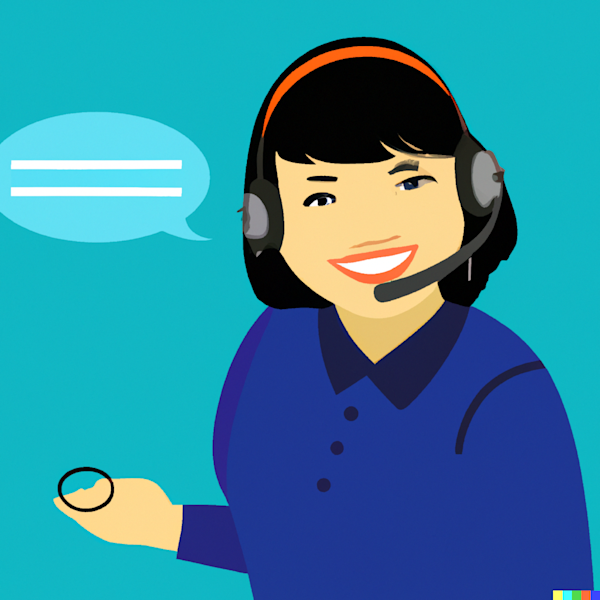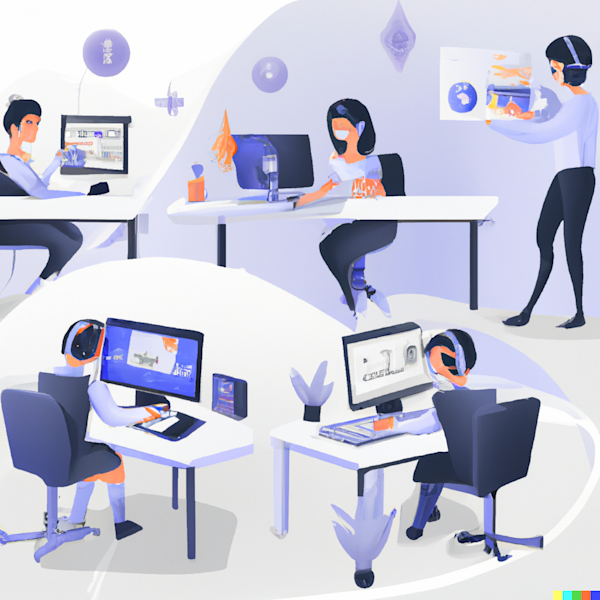Transforming Customer Experience cycle with the CX Flywheel
Customer Experience (CX) is the sum of a customer's entire experience with a business ranging from product awareness to sales and service. The smoothness of this experience cycle is critical in the growth or decline of a business. In recent times, it has become exceedingly tricky to achieve this with the customer journey funnel. This incapability is mainly due to a business and sales-centric core that can shift focus away from the actual customer needs.
In recent years, growing resentment and distrust have been brewing between customers and marketers. The new-age customer is dismissive of ads and prefers selecting their favorite products from fellow customers' reviews and ratings. Companies that continue to follow the dated funnel system must stop and consider adopting a better-suited approach to tackle present customers' needs.
The impact of the customer journey funnel on your business
A customer journey funnel is a model that tracks the customer experience stages on the different levels of a metaphorical funnel. The process has customers starting their journey at the top of the funnel and making their way down. The most common funnel model is a stagewise design with priority levels placing marketing at the top, followed by sales and service departments.
Here, the customer journey starts at the awareness stage, where customers first take notice of the product through ads or marketing communications. Customers then move to the interest stage, where they express interest and reach out to the respective businesses with product queries. Consumers who continue to have renewed product interest reach the final action and service funnel stages where purchasing and post-purchase support occurs.
A simple and seemingly effective model, right? Not quite so. In reality, While some customers stay through the various funnel stages and complete their customer journey, many drop off before purchase fulfillment. A lack of focus on customer churn during these drop-off points illuminates the most significant design flaw of the funnel model.
Customers who have left the funnel do so for many reasons, often made public to potential new customers through various mediums such as word of mouth, product pages, and social media. Customers who fall out of the funnel tend to stay out and encourage other potential customers to stay away often through online public forums, friends, and family. Spend less on expensive targeted marketing, and refocus your capital by re-centering the customer again.
The flaws in the funnel model also include a short-term approach to generating quick revenue through brute force customer conversion and retention processes. Consequently, this can cause inter-department disarray when attempting to achieve organizational targets and goals.
Recentering customer importance to the flywheel center with marketing, sales, and service generating the energy required to revolve it is where the CX flywheel model design triumphs over its predecessor. The CX flywheel treats the customer experience journey as a growth opportunity to improve the overall customer experience rather than a simple linear process to drive sales. Let's begin exploring why leaving the funnel model behind and adapting the customer-focused flywheel may be what your business needs.
Why the CX flywheel is taking over the customer experience cycle
Inspired by the design of a mechanical flywheel, the CX flywheel model applies business processes to the flywheel's axis as depicted energy contributors that spin the wheel in favor of the best customer journey and experience. This model places customers in the center of the metaphorical wheel and has marketing, sales, and service departments holding particular importance on its rotating axis. The principle is that all three components work in tandem in a rotary motion, generating enhanced customer experiences as a byproduct of increasing wheel momentum. The momentum, in this case, is a metaphor for inter-departmental alignment to achieve CX.
Conceptually, a rise in weightage of one part of the wheel directly creates the need for the other parts to compensate to keep the momentum going. Hence, in the case of businesses, the marketing, sales, and service divisions set the CX wheels in motion. To make sense of this, consider business sales. When product sales are performing well, it increases the weightage of the sales component of the wheel. This boost could result from new customer onboarding through excellent social media engagement or a change in seasonal trends working in favor of the product. In many cases, CX flywheel customers have a rise in sales just by word of mouth due to the quality of CX generated. Whatever may be the reasoning, the increase in the sales component weightage causes the wheels to move in a customer-driven direction.
For the flywheel revolution to continue on its axis, marketing and service need to look at the momentum and tailor their operations to match the sales component. Hence, an emphasis is placed on the departmental requirements to re-engineer processes to keep the wheels in motion and work together to increase momentum further. When there is enough speed and traction of the flywheel, it implies that the current is on the right track to meet company targets on customer satisfaction.
Any shortcomings in one or more flywheel components can slow down the wheel, implying a flaw in the business direction. A significant benefit of this model is that any departmental shortcomings can be easily spotted early on and corrected before the business suffers loss or reputational damage. Enterprises can reassess consumer trends and management errors and make appropriate changes to ensure the momentum gets going again. For instance, a business showing declining sales or a barrage of bad reviews can immediately identify problems through insights generated from the flywheel model to assess what went wrong during the customer journey. These insights allow businesses to make appropriate directional changes to get the wheel moving again. This forces all the relevant business departments to work in tandem to gather accurate customer data, attain customer retention, build brand value and recognition, and achieve inter-departmental synchrony setting the ideal pace for the revolving axis.
How CX flywheel can be beneficial for businesses
Primarily, the CX Flywheel helps maintain top-notch customer experiences hitting every customer journey cycle benchmark. This customer satisfaction is achievable through three carefully designed phases; attract, delight, and engage, reinforcing the strong reasoning behind the flywheel model metaphor applied to CX.
Phase one, or the attract stage, begins with marketing. Funnel marketers are gaining a reputation for force-feeding irrelevant information onto unsuspecting customers to increase brand or product awareness. This action creates a ripple effect that contributes to overall brand distrust and drops in product sales. However, the flywheel model ensures the business takes a step back and deploys means to earn the consumer's trust. This crucial differentiator between funnel and flywheel models is that flywheel customers can seamlessly access relevant product and business information through multiple channels rather than it being forced. This invaluable metric is achievable through data-driven customer segmentation, search engine optimization(SEO), social media adverts, targeted advertisements, and customized customer conversion and acquisition. It is notable business advice to avoid the infamous funnel model strategy of achieving sales by any marketing means necessary to a trust-based flywheel alternative.
Next is the engage phase, where businesses offer multichannel support and ease of access, allowing customers 24/7 access to the business support and products. These channels empower customers to contact customer support on product-related and business-related queries at their preferred communication medium and time. Effective CX solutions ensure query resolution with fast business responses, resulting in positive brand perception.
Finally comes the delight phase, aimed at reducing customer churn and reinforcing the importance of the customer experience. This phase primarily achieves these targets through AI-powered offerings that provide self-support options, automated onboarding functionality, customer feedback platforms, and privileged membership programs.
These three CX flywheel marketing stages offer a non-invasive customer service experience with earned trust that gives control back to the customer previously taken away by the funnel model. The best part about the CX flywheel is that it aligns HR, marketing, sales, and service departments to work together to elevate customer experiences rather than drive their products. The CX strategy is streamlined by keeping up with customer behaviors and sentiment trends. CX flywheel differentiates itself from the funnel by offering a quality customer experience that begins with drawing customers and ends with customers wholeheartedly vouching for the products and brand, generating invaluable word-of-mouth (WOM). This marketing goal is difficult to achieve by simply pumping money and resources into the funnel. Ensuring your business harnesses the power of the customers to generate consistent long-term growth is the actual value of the CX Flywheel model.
As we move forward, businesses need to ask themselves whether a funnel-based approach is a way to go in 2022. Several effective CX providers can help answer that question by providing a transition strategy detailing how their CX services can help transform your business in favor of its customers. It may be the right time to move your business processes toward a robust CX flywheel-based customer engagement. Ideally, look for a service provider with integrated Artificial Intelligence (AI) working with sales CRM, automated marketing, customized content, and multichannel customer support. With the right provider on your side, your transformation and its associated CX growth have never been more straightforward.
Let Inflection transform your customer service experience
Inflection is one such service provider that offers AI-powered innovative BPO services and CX specialists that can help you make your customer dreams into a reality. Our wide range of services targets every stage of the customer journey with the best customer experiences services on the market. Our highly trained professionals utilize the CX flywheel strategy to deliver cost-effective, superior experiences to your customers. Our agents are trained in voice and multichannel support to transform the customer experience. Contact us to explore how Inflection can help you deliver superior experiences while cost-effective.
Currently, these links are entry page links because we are not sure of the exact URLs. Please replace this with "solution/product page" when the website is liveCurrently, these links are entry page links because we are not sure of the exact URLs. Please replace this with the "contact us/inquire page" when the website is live.




